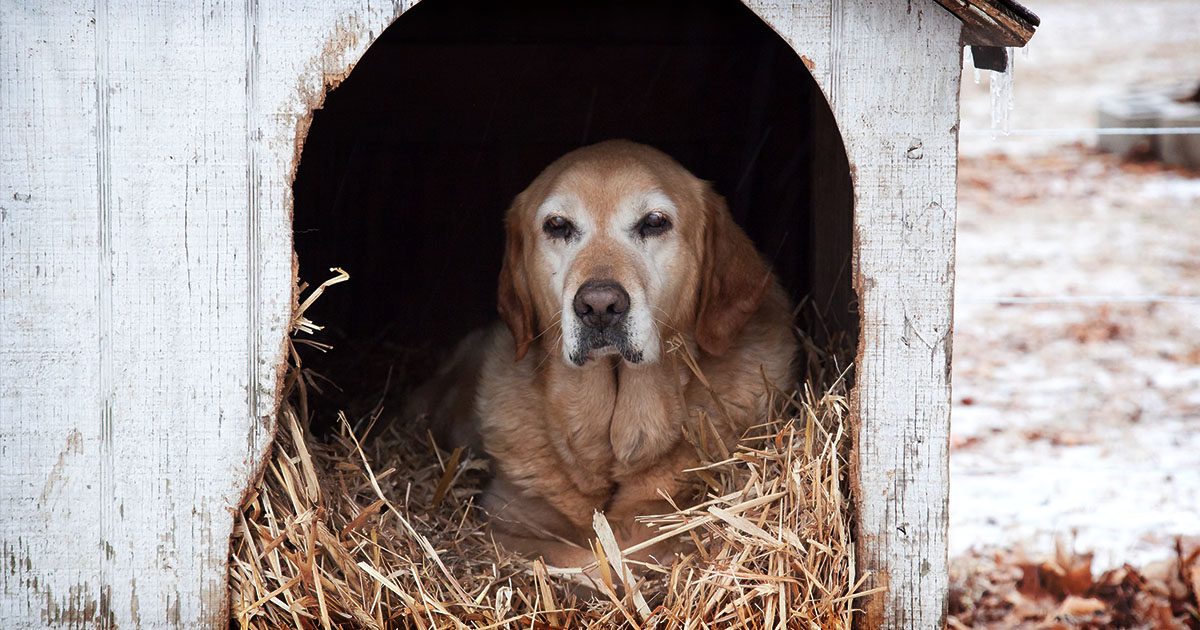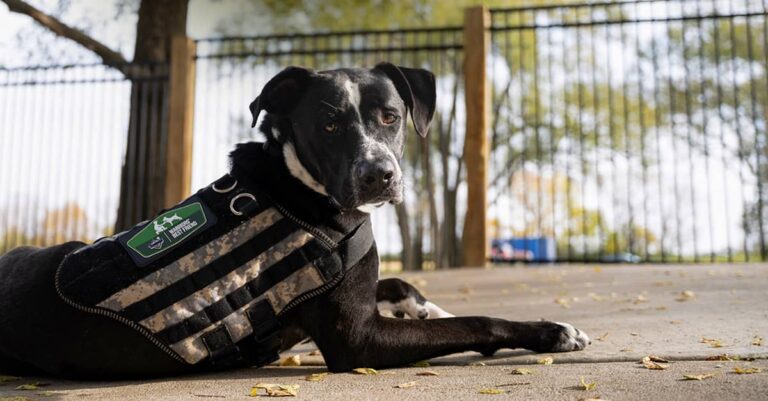Welcome to “Debarking Pet Myths,” a monthly series dedicated to addressing common myths, misconceptions and old wives’ tales about dogs and cats.
It’s not uncommon for people to believe this month’s myth that dogs can tolerate cold weather because of their fur. Dogs have built-in coats, so it might be easy to assume that they’re already equipped for cold weather. But if you look at a dog’s natural coat in the same way you look at a human’s choice of coat, it’s easy to see that some are good for colder temperatures and some, well, they’re pretty to look at.
Do Dogs Need Winter Coats?
Yes, there is sometimes a need for winter dog jackets. When it comes down to it, even the thickest, most luxurious fur won’t protect a dog from certain temperatures. It might seem counterintuitive to knit your husky a sweater, but domesticated dogs simply aren’t built to survive unaided in the harshest environments. The reality is, even with conditioning, sometimes it can get too cold for dogs to spend long periods of time outside, especially without proper shelter and nutrition.
Do Dogs Get Cold in the Winter?
“Cold” is relative. Winter in Florida is vastly different from winter (or fall or spring) in Minnesota. If you’re used to 80 degrees Fahrenheit, you might bundle up the second the thermometer drops below 45 degrees. Dogs are no different, and they might even be more susceptible to temperature changes because they’re in direct contact with the ground.
Just like with people, dogs’ cold tolerance can vary from pet to pet based on their coat density, age, nutritional status, amount of body fat, activity level and health. Northern and mountain dog breeds with a thick undercoat tend to do best in winter: Siberian huskies, Samoyeds, Alaskan malamutes, Great Pyrenees, Icelandic sheepdogs, Newfoundlands and others. But even members of these breeds need to acclimate to cold weather and are at risk during subzero temperatures.
It’s generally agreed that once temperatures fall below 20 degrees Fahrenheit, no dog should be out in the elements for very long without protection. Dogs with thicker, heartier coats (huskies, Saint Bernards, etc.) will likely be okay for longer periods, but small dogs, thin-coated dogs, puppies, senior dogs or sick dogs might need to be bundled up even for quick trips. Every dog, however, is at risk of frostbite or even hypothermia if left in those temperatures for very long.
Sometimes Winter Coats for Dogs Are Needed
As beautiful as a dog’s coat may be, fur isn’t a perfect insulator, especially when it’s very cold. Regardless of breed, even thick- and double-coated dogs are vulnerable to cold-weather health threats such as frostbite and hypothermia.
Keep in mind that there’s more to weather than just the thermometer reading. Wind can slice through even the thickest fur coat, exponentially affecting a static temperature. For dogs with thin fur, “wind chill” takes on a whole new meaning.
Wet weather, either due to rain and snow or just wet ground, can be the most dangerous thing of all when the temperature drops below freezing. With prolonged exposure to freezing temperatures, direct contact with moisture on the skin can quickly lead to frostbite, so watch those paws.
Most frostbite danger occurs when the temperature or wind chill are near or below 0 degrees Fahrenheit. Prolonged exposure to the cold results in severe tissue damage in the extremities such as the dog’s ears, paws or tail.
Hypothermia occurs when a dog’s body temperature falls below normal; for dogs, normal is 100.5 to 102.5 degrees Fahrenheit. The most common cause of hypothermia in dogs is prolonged exposure to extreme cold temperatures.
Best Dog Jackets for Winter
There are dozens of dog winter coats available to keep your dog warm. Some are essentially soft fleece blankets that are made for dogs, while other dog jackets are more functional, e.g., water resistant materials, pockets, reflective accents. You’ll have to decide what’s right for your dog, but here are some important things to consider when searching for a good dog coat:
- Fit — Make sure the winter coat is snug on your dog but doesn’t restrict movement. Measure your dog’s chest size, length and width to assure a proper fit of the dog jacket.
- Material — Some materials are better suited for some environments, so make sure yours is compatible. For instance, if your dog is out in wet conditions a lot, a water resistant outer shell is a must for your dog’s jacket. Some dog coats have a temperature rating, so if you’re looking at walks in extremely cold conditions, ensure the dog jacket is suitable for keeping your pup warm.
- Ease of use — You don’t want the dog jacket to be a hassle to put on, so make sure you find one that is easy to get on and off. For example, find one that fastens with hook and loop straps and has an opening for your dog’s harness clip. Ease of use becomes vital if you have a dog who doesn’t move well or if you have a fidgety dog that moves too well.
Also consider boots. If you’re in a place where you don’t control the use of snowmelt (always use pet-safe deicers!), your dog might need foot protection. Some deicers can cause chemical burns to foot pads and can be poisonous if your dog decides to lick them off, so booties can kill two birds with one, er, boot. If your dog’s legs and feet are furry, snow and ice can accumulate between their toes or in the “rooster tails” on their ankles, so even dogs with thicker coats can benefit from boots.
A Dog Winter Jacket Might Not Be Enough
In the end, you know your dog, so you’re the best judge of their comfort. Wearing coats may not be comfortable for some dogs, and if your dog seems to be having trouble with the cold, it may be best to simply head inside. If you are seeing physical signs of struggle, it could be the onset of hypothermia. Here are some common signs:
- Shivering
- Cold ears and feet
- Lethargy
- Pale gums
- Muscle stiffness
If you see any of these signs, get inside quickly, wrap your dog in a warm towel and call your vet immediately.
In Addition to a Dog Winter Coat, Shelter Is Important
According to the American Veterinary Medical Association, dogs should be kept inside during cold weather and especially during extreme cold. But if you can’t keep your dog inside, he or she needs an insulated shelter that is positioned away from prevailing winds and keeps your dog’s fur dry. An appropriate dog house should be just large enough so your dog can stand up, turn around and lie down comfortably. The shelter’s floor should be off of the ground to minimize heat loss and bedding should be thick, dry and changed often. Clean, dry straw works better than towels, blankets or rugs to keep dogs warm because fabric can absorb moisture and freeze in subzero temperatures.
Talk with Your Veterinarian About Feeding Your Outdoor Dog
Finally, dogs who spend substantial time outdoors during cold weather will need more calories so they can produce enough body heat to keep warm. Calories may need to be increased by as much as 30 percent, depending on your dog, their activity level, housing and outdoor temperatures. And don’t forget to provide fresh, unfrozen water at all times. If you have any questions or concerns about your dog’s nutritional needs during winter months, be sure to talk with your veterinarian.
Some dogs are more equipped to handle the cold than others. If there’s any doubt, opt for a winter coat, and be sure to pay special attention while they are out there. If it’s cold enough for dog jackets to be worn, it might be time for shelter instead.








